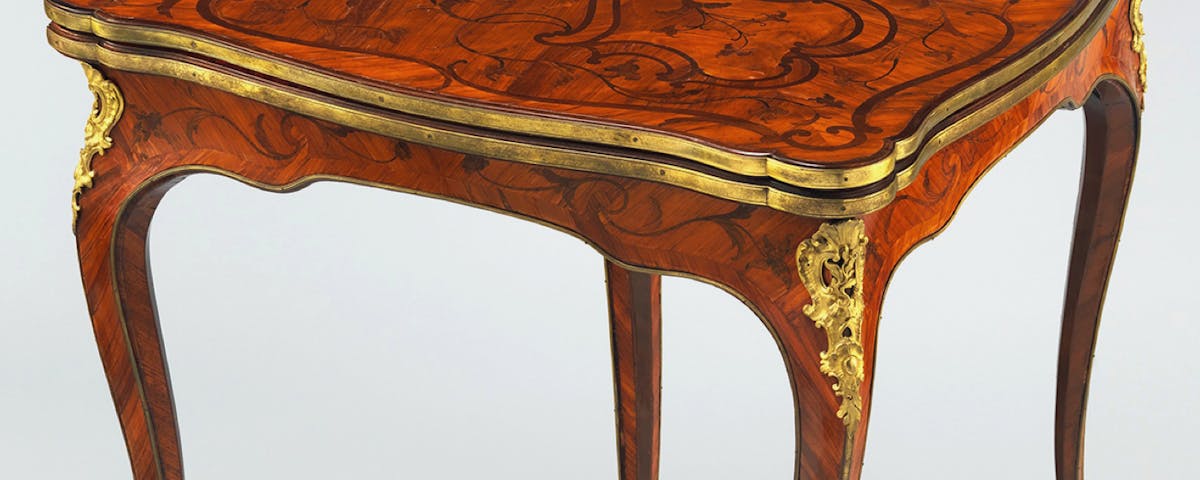Do you have an antique curio cabinet, old wooden chairs or an antique oak dresser inherited from your relatives? Perhaps it is a cabinet or a mahogany dining table that you found at a car boot sale? Or a Georgian chest of drawers you picked up at an auction? Do you ever wonder what your antique and vintage furniture is worth? There is an easy way to find out. Get your antiques valued online by one of our Value My Stuff Furniture Experts!
Check our pricing and buy an appraisal package that suits you best! With a bigger package a price for a single appraisal is lower! Click here for more information!
If you wonder about having your antique furniture appraised, the following answers from Value my stuff may help you!
How much is my antique and vintage furniture worth?
There are several factors that are taken into account while establishing the value of your antique or vintage pieces. One of the most important is the age of the piece and its authenticity. There are not so many authentic pieces of furniture that survived to our times in their original untouched form. Chairs and sofas were reupholstered with new fabrics if the old, the front legs of chairs and sofas were often replaced when the old ones gave up and the chests and wardrobes were remodelled or uplifted with new decorations. The less changes and repairs were applied to the furniture, the more value it will hold.
Another vital factor is the condition of the piece. If your gorgeous Victorian canopy bed was once infested by woodworm that weakened its construction, your Louis VXI writing desk was affected by moisture that led to mold and fungi, and the chrome construction of you Le Corbusier sofa is rusty, then the value of those pieces will be significantly affected. It is always good to seek help from a professional furniture conservator to have those things fixed before seeking valuation or to sell your pieces.
An important component of the value of your furniture is its provenance. The worth of your armchair or chest of drawers will increase if you can prove it was made by a famous furniture maker or designer. Antique furniture made by André-Charles Boulle, George Hepplewhite, Josef Dannhauser or vintage furniture designers such as Charles and Ray Eames, Paul Evans or Gio Ponti will be worth much more than from an unknown workshop. If you are lucky to inherit a piece of furniture that belonged to your Rock-Star icon uncle, this may also significantly boost the value of it.
The last aspect of the valuation is the state of the furniture market at the moment. As with anything, some things are more trendy and in fashion than others, and while heavy dark wood Victorian pieces may be harder to sell this year, they may be more valuable a year after.
Submit your Antique and Vintage Pieces for Appraisal Here!
How easy it is to appraise antique or vintage furniture online?
Antique and vintage furniture is one of Value My Stuff’s most prominent categories. While many of the pieces are big, heavy and troublesome to transport to get it inspected first hand, the online appraisal seems to be a natural choice. It is not only cheaper to use our online appraisal but also much faster. All you need to do is to take images of your piece, measure it and write a short description of your furniture in our online form. After you submit your request, the appraisal certificate will land in your inbox within 24-48 hours, depending on the service you chose.
How to tell how old the dresser is?
There are actually several tips you can use to evaluate yourself if your furniture is antique before submitting it for a professional appraisal.
1. Look on the side of the drawers and cabinets for the signs of this type of dovetailing. Dovetail joints were used in furniture making for centuries and can indicate the age of your piece. The irregular shape is what you want to find as it will indicate your chest was made by a craftsman’s hand and not by a machine as it is often the case with modern pieces.
2. If you notice that your piece is made with several different types of wood, it may mean that it is actually an antique. Valuable wood types such as rosewood, ebony or exotic sandalwood were only used where they would be on display, whole cheaper larch or maple was used in the inside of drawers or bottoms of the chairs. If your piece is made from one piece of wood it is probably a reproduction.
3. Markings, letters, numbers and stickers can tell you a lot about the provenance of your piece and sometimes even a year of when your furniture was made. You can usually find them on the inside of the drawers, the backs of the cabinets and on the lower, non visible edges of the pieces. Watch out for the fake markings though and look for the ageing signs.
4. Antiques are never perfect. Handmade pieces are often given away by being asymmetrical, having small size and shape distortions. Machine cut furniture was first introduced in the 1800s thanks to the invention of the engine and the need for mass produced items. So if you spot irregularities in carved details, there is a big chance your furniture predates machine made pieces.
How to identify wood in antique furniture?
For centuries, furniture makers chose different types of wood to create their pieces depending on the various qualities. The most common quality is the hardness of the wood. Lumber is often divided into soft and hardwood. While softwood is often derived from conifers, the hardwood comes from deciduous trees. Some of the most common types of antique woods are still used in furniture making today. To correctly identify what kind of wood was used in your furniture, our expert would need good and clear images, ideally taken in a good natural light. The images of the fronts and back of the drawers and cabinet doors, shelves and joinery will be very useful. Sometimes the furniture has a construction with cheaper wood that is clad with a thin layer of more expensive wood, a so-called veneer.
1. Pine is the most common softwood used in antique furniture. It is lightweight and resistant to shrinking and swelling due to moisture, but can split easier than the other types of wood. Pine wood is often white or pale yellow and darkens over time. It was common wood to use for constructing the pieces that were later clad in veneer.
2. Mahogany is a native tree to Central, South America and West Indies. This exotic wood became popular in furniture in the age of geographical discoveries. It has a distinctive grain pattern and its color palette ranges from light brown to red and sometimes with a ribbon effect. Mahogany was often used dining tables and dressers, both as a solid piece of wood or as a veneer.
3. Oak, red or white, is very hard and solid wood, and was very popular in cabinets and all furniture construction. Oak was very popular with the Arts and Crafts movement, which was famous for creating quality and resistant furniture. Oak wood can be easily confused with Ash as the two types look and behave similarly.
4. Walnut has a range of varieties and a multitude of colors from black to yellow brown. One of the properties of this walnut wood is that it lightens with age, but can be easily spotted for its rich figured grain, known for cathedral patterns. Walnut veneers were popular to clad pine construction and are more common than solid walnut pieces. Walnut burl veneers are also common on edges and trim in larger pieces.
5. Rosewood got its name from the scent it gives off when being cut, much like the flower. Rosewood has a reddish shade and can look similar to mahogany, but it can be recognised by fine black or white rings. It is also much heavier.
6. Cherry wood is very common in American antiques, as well as Queen Anne styles of furniture. Cherry wood is almost pink when first cut, but darkens with age to gain a beautiful brown and red hue. It was very common in cabinetry construction due to its strength and durability.
What do appraisal specialists look for in antique furniture?
Usually the furniture experts first assess the style and the materials used to date the piece. They look for the damage and defects. There are certain kinds of wear and tear that constantly appear in genuine antique furniture. For example, antique chairs often have recurring damage to their front legs caused by spurs, which indicates the age of the chair. The joinery, types of wood and markings also reveal a lot of information while estimating the age of the piece. Everything out of ordinary, such as materials, types of wood or decorations that do not correspond with the historical period can indicate forgery or remodelling of the piece, so called marriage. That is why the expert can often ask you for extra images of the inside of a drawer, a close-up image of a handle or joinery. The same applies to dating vintage furniture as the specialist will know exactly how designers were constructing their pieces and with what materials. To help assess the age of other items like a mirror, or a cabinet an image of the back can be helpful. However, as with all furniture please do not attempt to move the piece unless it is safe and easy to do so.
What antique furniture is currently selling?
For several years now the furniture segment of the antique market has fallen in price. High-class pieces or the pieces with an outstanding provenance or that were owned by a famous persona have a much higher chance to fetch a record breaking price, and the market right now is focused on such pieces. But good quality and genuine antique furniture will always find its place at the auction and will always do good. Luckily the forgeries and modern reproductions that flooded the market in the 20th century are easy to spot and they are drastically lower in value than the originals. Vintage furniture from the 1st half of the 20th century is very popular right now. The timeless pieces by Arne Jacobsen, Mies van der Rohe or Florence Knoll will easily fit in a popular modern minimalist space as well as in more eclectic interiors.
Our Antique Furniture Experts
After studies in architecture, our English and Continental furniture expert embarked on a career in fine art auctioneering. He became a Fellow of the Royal Institution of Chartered Surveyors. Until February, 2012, he was for the past thirty-two years the senior English and Continental furniture valuer at Sotheby’s in Bond Street. This entailed valuations of many of the great collections in palaces, castles and country houses throughout the U.K. and overseas, as well as involvement with some of the great dispersals such as Thurn und Taxis, Baden and Chatsworth House.
Our continental furniture specialist joined Sothebys as a porter after university in 1994 and spent the whole of 1995 working on the Baden-Baden house sale. He then became a furniture specialist and in 2000 worked in Germany to help put together a major house sale at Schloss Mon Repos. He is a member of the Royal Institute of Chartered Surveyors (MRICS) and has been evaluating and cataloguing antique furniture for 20 years.











